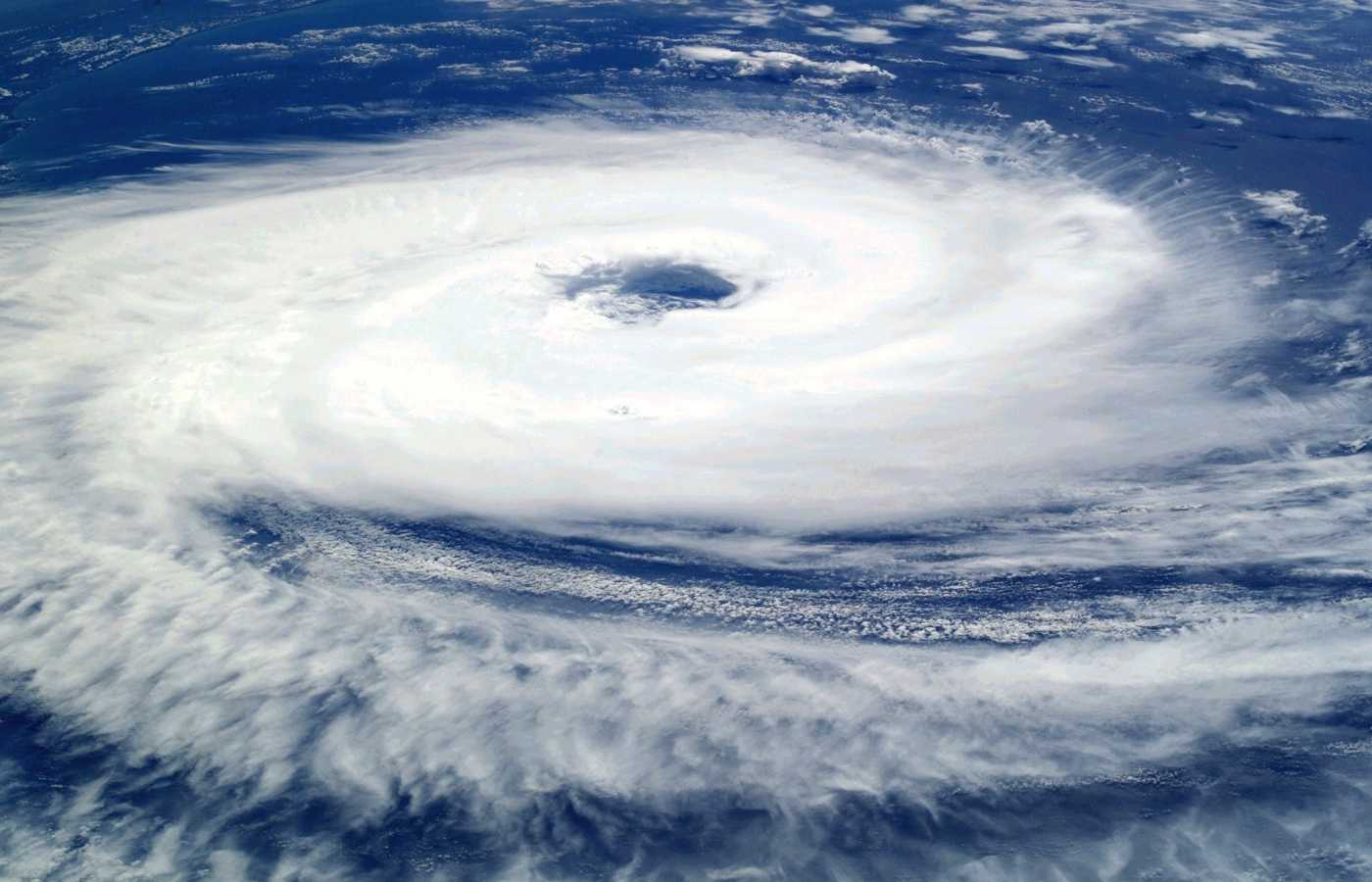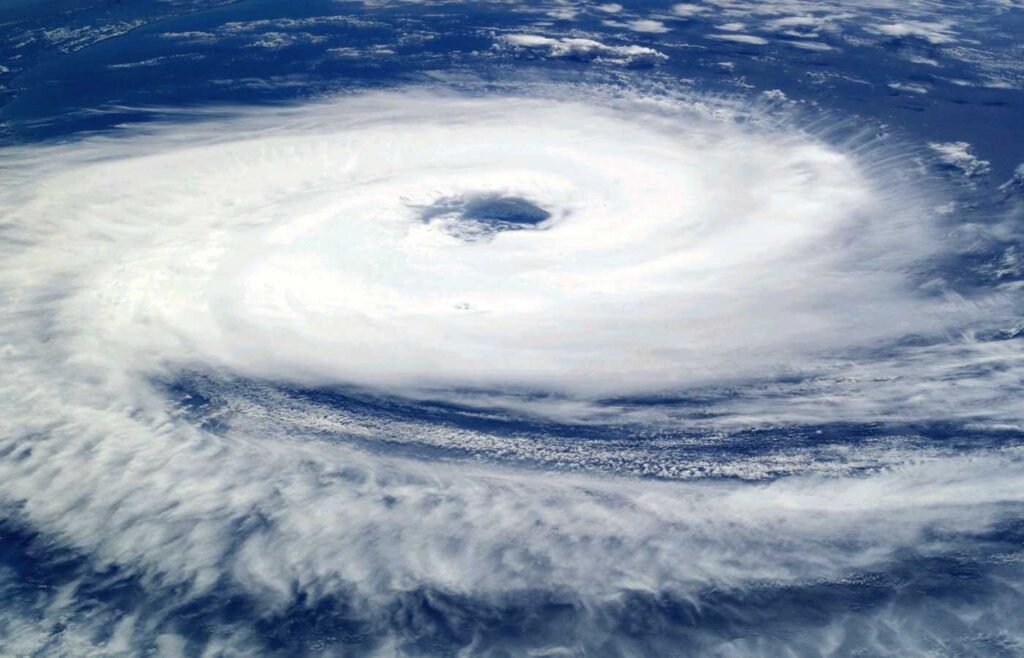
The first week of May is Hurricane Preparedness Week, and there’s no better time to learn all about these intense tropical storms.
Hurricanes are known for their strong winds and heavy rainfall. These powerful storms can be very dangerous sand cause a lot of damage, and it’s important to be prepared.
Here are some interesting hurricane facts.
50 Interesting Facts about Hurricanes
- Hurricanes are giant tropical storms, also known as tropical cyclones.
- The word hurricane comes from the Taino Native American word ‘Huracan’, the God of wind, storm, and fire who was worshiped by the Mayans. Their word “hurucane” meant “evil spirit of the wind”.
- Hurricanes form when the warm, moist air above the ocean surface rises, causing air around it to be “sucked” in. This new air also becomes warm and moist, and rises, too, beginning a cycle that forms clouds. The clouds then rotate with the spin of the Earth. If there is enough warm water to feed the storm, a hurricane forms.
- Each year, an average of 10 tropical storms develop over the Atlantic Ocean, Carribean Sea, and Gulf of Mexico.
- About 6 of these tropical storms become hurricanes each year.
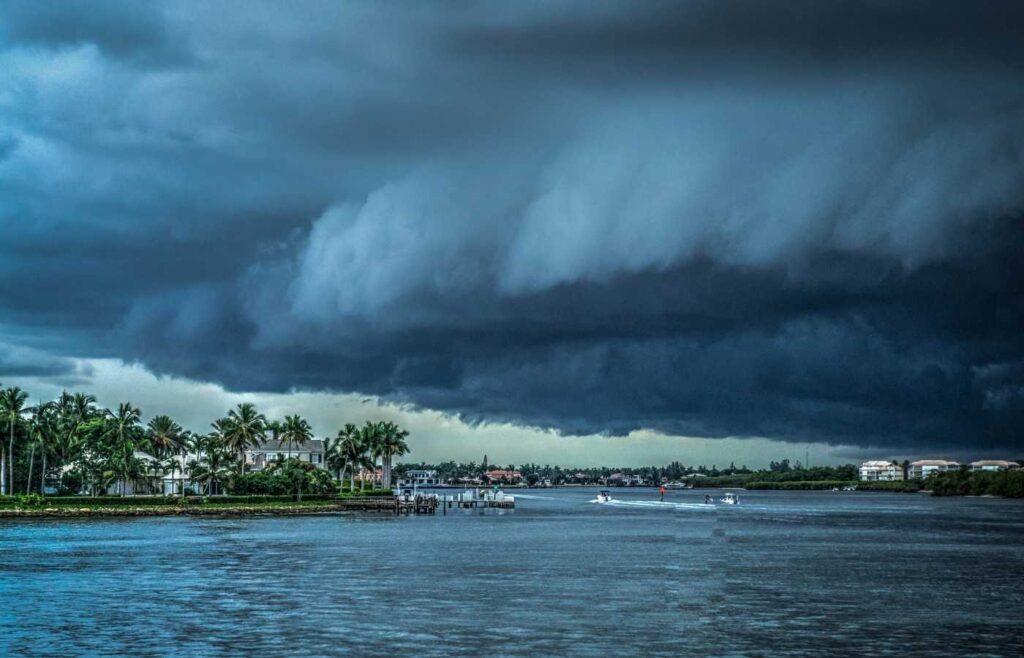
- Hurricanes produce heavy rain and powerful winds.
- In an average 3-year period, roughly 5 hurricanes strike the United States coastline. Of these, 3 are typically major hurricanes (winds greater than 110 mph).
- Hurricanes kill approximately 50 to 100 people in the United States over an average three year period.
- A tropical storm is considered a hurricane when its wind speeds reach or exceed 74 mph (119 km/h).
- Hurricane strength is defined using the Saffir-Simpson Hurricane Scale:
- Category 1 Hurricane: Wind speed ranges from 74 miles per hour to 95 miles per hour.
- Category 2 Hurricane: Wind speed ranges from 96 miles per hour to 110 miles per hour.
- Category 3 Hurricane: Wind speed ranges from 111 miles per hour to 129 miles per hour.
- Category 4 Hurricane: Wind speed ranges from 130 miles per hour to 156 miles per hour.
- Category 5 Hurricane: Wind speed ranges from over 157 miles per hour.
11. Hurricanes usually form in tropical parts of the world, around the earth’s equator, like the Caribbean Sea and the Gulf of Mexico.
12. Coastal areas are at the highest risk of being affected by a hurricane.
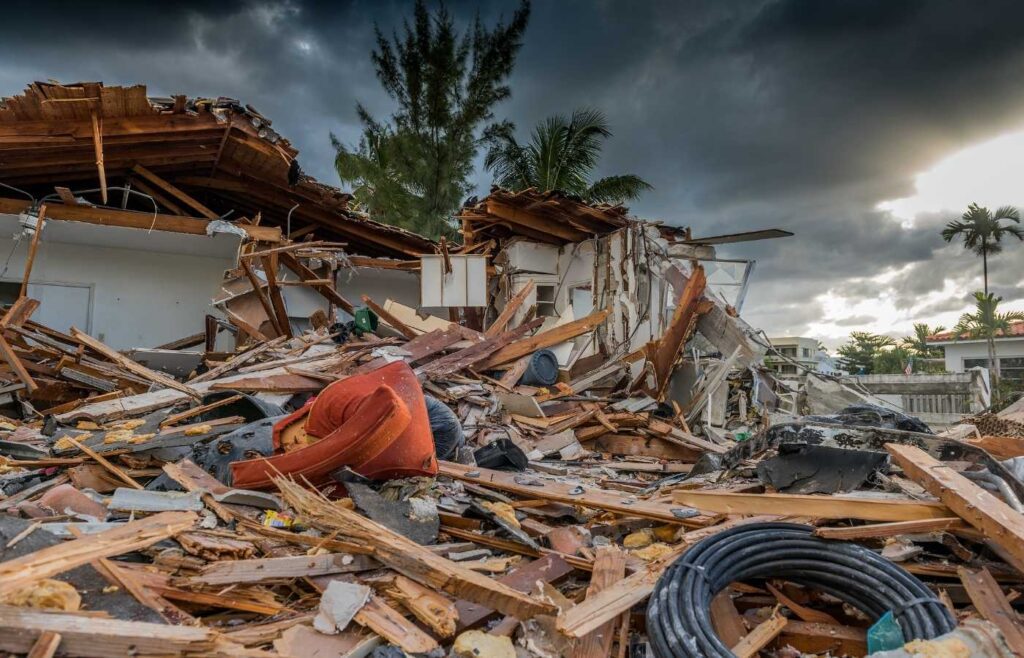
13. Hurricane season runs from the beginning of June until the end of November. Mid-September is considered the peak of the hurricane season.
14. Hurricanes can and have occurred outside of hurricane season.
15. The three main parts of a hurricane are the eye, the eye wall and rain bands.
16. The “eye” is the center of the hurricane. Hurricanes rotate around the “eye“.
17. The eye of the hurricane is the safest part of the hurricane. It is generally calm with no clouds.
18. The eye of a hurricane can be anywhere from 2 miles (3.2 kilometres) in diameter to over 200 miles (320 kilometres) but they are usually around 30 miles (48 kilometres).
19. The eye wall surrounds the eye, and it’s the most dangerous part of the hurricane. It has intense winds, thick clouds, and heavy rains.
20. The rainbands are the outer part of the hurricane that spin with it. The rain is so heavy that it can cause floods.
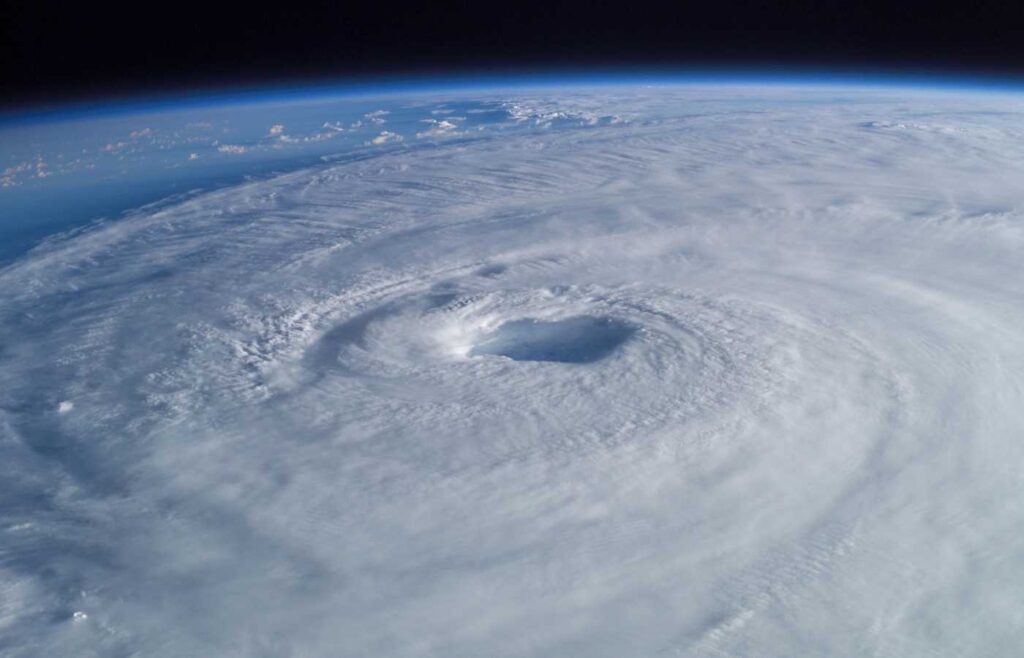
21. Most hurricanes actually occur out at sea in the warm ocean waters, and are harmless. But when they happen on land they are very dangerous and cause serious damage.
22. A hurricane usually lasts for over a week, moving 10-20 miles per hour over the open ocean.
23. When a hurricane hits the land, it causes the hurricane to weaken and slow down because it doesn’t have the moisture from the sea to fuel it.
24. The violent winds of a hurricane can reach up to 200 miles per hour.
25. The winds of a hurricane can be strong enough to rip up entire trees and destroy buildings.
26. Hurricanes spin in different directions depending on where they form in the world. If they form in the southern hemisphere, hurricanes rotate in a clockwise direction, and in the northern hemisphere they rotate in an anti-clockwise direction. This is due to what’s called the Coriolis Force, produced by the Earth’s rotation.

27. A storm surge often happens when a hurricane reaches land. The high winds push the sea water toward the shore, causing high waves and rising water level.
28. Storm surges can reach 20 feet high.
29. Hurricanes that move slowly are actually likely to cause more damage than fast-moving hurricanes. They produce more rains causing more damage by flooding.
30. There are different names for hurricanes, depending on where in the world they form.
31. Hurricanes are called “hurricanes” when they occur in the Atlantic Ocean or northwest Pacific.
32. Hurricanes are called typhoons in the South Pacific.
33. Hurricanes are called cyclones in the Indian Ocean.
34. Hurricanes can range from 100 miles to 1000 miles wide!
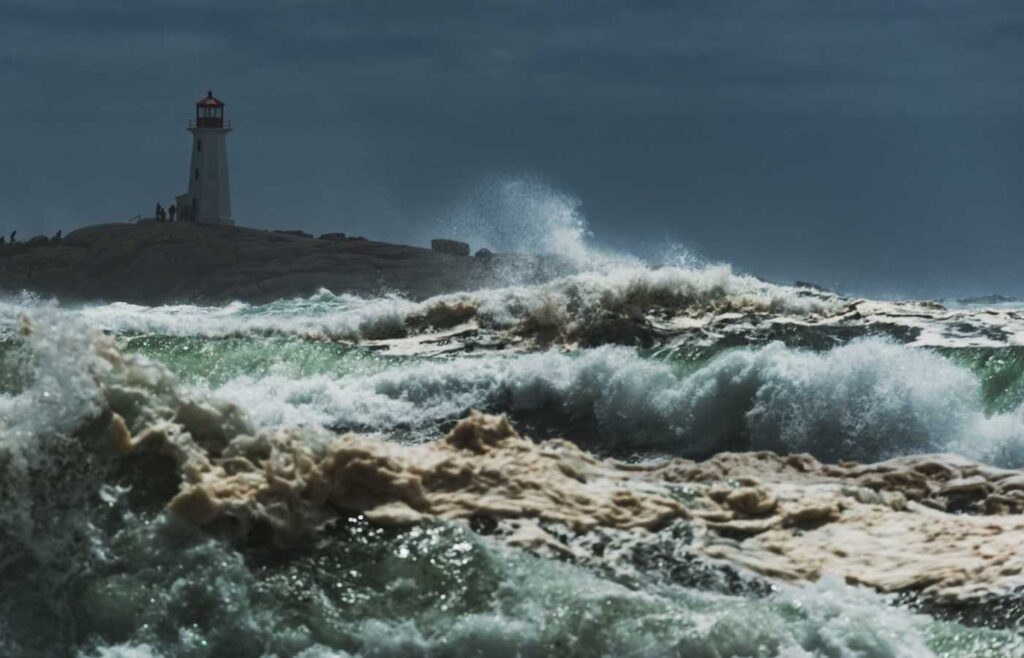
35. The largest hurricane on record occurred in 1979 in the northwest Pacific. It had a diameter of 2,220 km, or nearly half the size of the United States. It was called the Typhoon Tip.
36. Hurricanes are the only weather disasters that have been given their own names.
37. Each year, tropical storm are named in alphabetical order according to a list produced by the World Meteorological Organization. The names can only be repeated after six years.
38. When the National Hurricane Center began giving official names to storms in 1953, they were all female. This practice of using only women’s names ended in 1978.
39. Hurricanes can also produce tornadoes. They are not as strong as regular tornadoes and last only a few minutes.
40. The year 2005 saw the most hurricanes ever to form in a single Atlantic season, with 15 hurricanes.
41. Every second, a large hurricane releases the energy of 10 atomic bombs.

42. The planet Jupiter has a hurricane which has been going on for over 300 years. It can be seen as a red spot on the planet.
43. The hurricane on planet Jupiter is bigger than the Earth itself.
44. 40% of the hurricanes that occur in the United States hit the state of Florida.
45. 90% of the deaths that occur during hurricanes is because of the floods created by this disaster.
46. The National Weather Service says the first record it has of a flight purposefully flying into a hurricane dates back to 1943 off the coast of Texas. British and American pilots were training for World War II when the storm approached, and a crew purposefully flew into the storm.
47. Hurricanes have led to the death of around 2 million people over the last 200 years.
48. The deadliest hurricane on record occurred in 1970 in Bangladesh killing over 300.000 people. It was called the Bhola Cyclone.
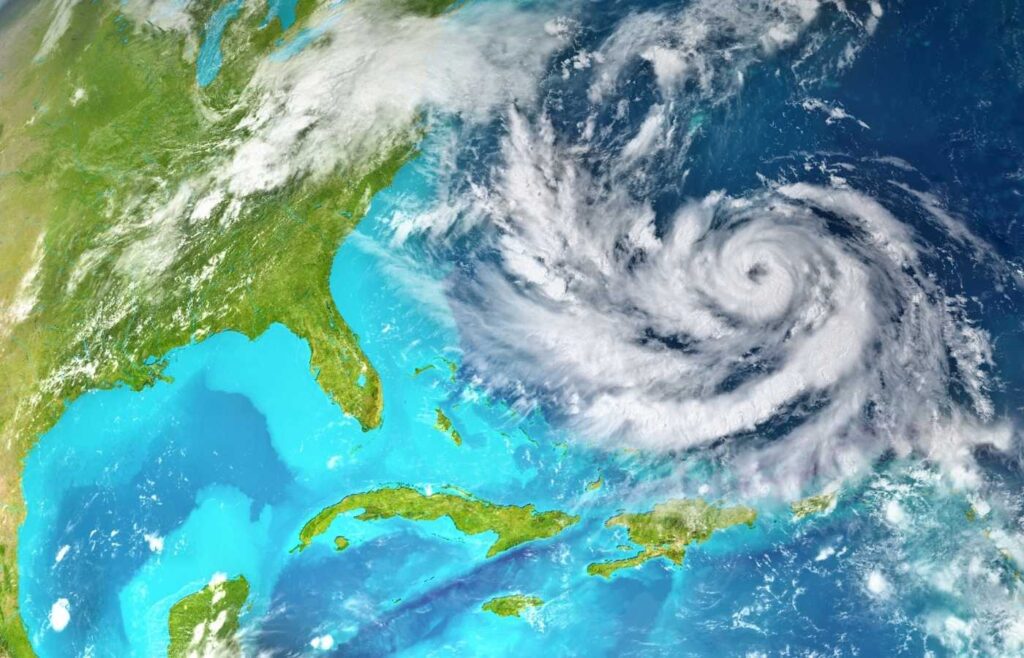
49. In 2005 a major hurricane called Hurricane Katrina killed over 1800 people in the United States and caused a lot of damage. The damages cost around $80 billion dollars to fix. The city of New Orleans was hit particularly hard with levee breaches leading to around 80% of the city being flooded.
50. The deadliest hurricane in the United States was the Galveston Hurricane in 1900. It’s estimated that up to 8,000 U.S. citizens were killed.
51. Two feet of rain dropped in the first 24 hours of Hurricane Harvey in Texas in 2017.
Frequently Asked Questions About Hurricanes
Do hurricanes hit California?
While hurricanes are rare for the U.S. West Coast, it’s not impossible for a hurricane or tropical system to impact Southern California. There was one hurricane in 1858 which became known as the San Diego Hurricane after making landfall in California and producing significant wind damage. In 1939 the Long Beach Tropical Storm produced major flooding. In 1976, Hurricane Kathleen made landfall along northern Baja California, bringing heavy rain and flooding to southern California. (Source: CompuWeather)
How fast are hurricane winds?
The violent winds of a hurricane can reach up to 200 miles per hour.
Are hurricanes getting stronger?
Yes, hurricanes are getting stronger as the planet warms. Hurricanes form when the warm, moist air above the ocean surface rises, causing air around it to be “sucked” in. This new air also becomes warm and moist, and rises, too, beginning a cycle that forms clouds. The clouds then rotate with the spin of the Earth. If there is enough warm water to feed the storm, a hurricane forms.
How To Help
To help people who have been affected by hurricanes, visit the Red Cross Hurricane Relief page.
Hurricane Books for Kids
To learn more about hurricanes, we recommend these books:
Related Articles
Emperor Penguin Facts for Kids
Calie Herbst, Editor-in-Chief of Milwaukee With Kids, has spent over a decade combining her experiences as a parent of three to create a hub for Milwaukee’s family adventures.
Her decade-long teaching career in Milwaukee Public Schools and academic background, including a Master’s in Teaching from Marquette University and dual B.A.s in Sociology and Spanish from the University of Wisconsin – Madison, fuel her passion for inclusive and engaging family content.
Calie is also a recognized voice in local media, contributing to WISN Channel 12 News, WTMJ Wisconsin Morning News, Fox 6’s Real Milwaukee, and B93.3.
Discover more about Calie’s journey and editorial approach on her About Page and Editorial Policy Page.


